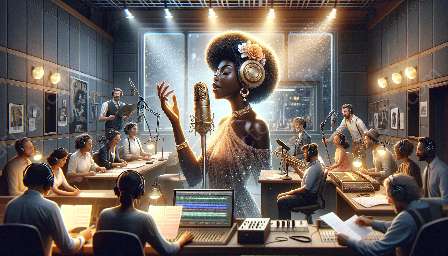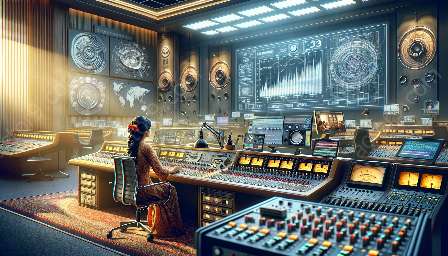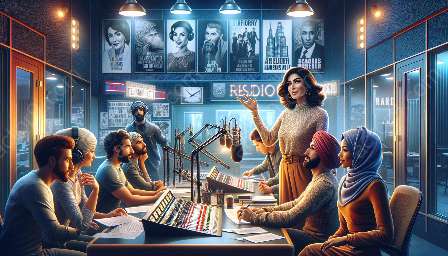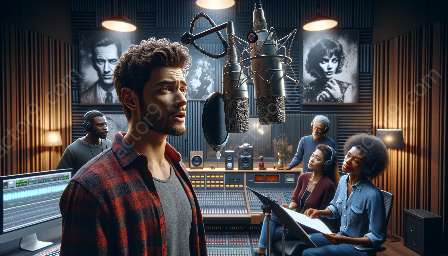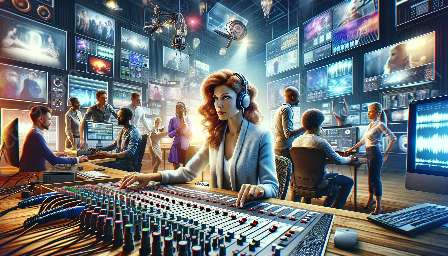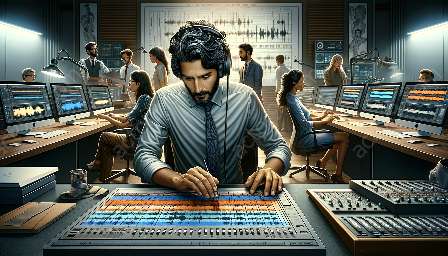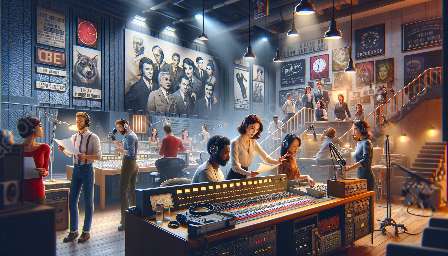Radio dramas have a rich history in providing entertainment and storytelling for audiences of all ages and backgrounds. As technology continues to evolve, the production of radio dramas faces various technical challenges in meeting the diverse needs of its audience. From sound engineering to script adaptations, this topic cluster delves into the intricacies of producing radio dramas for different audiences and the cutting-edge technology employed in this process.
Understanding Radio Drama Production
Before exploring the technical challenges, it's essential to understand the intricacies of radio drama production. Radio dramas involve the creation of audio content and storytelling, where sound effects, voice acting, and music are utilized to immerse the audience in a compelling narrative. It requires a strategic blend of sound engineering, script development, and performance to create a captivating experience for listeners.
The Role of Technology in Radio Drama Production
Technology plays a pivotal role in enhancing the production quality and audience engagement of radio dramas. Advancements in recording equipment, sound editing software, and digital distribution platforms have revolutionized the way radio dramas are produced and consumed. These technological advancements empower producers to deliver high-quality audio content and reach a broader audience through online streaming and digital radio.
Technical Challenges in Producing Radio Dramas
When it comes to producing radio dramas for different audiences, several technical challenges need to be addressed to ensure a seamless and captivating listening experience. These challenges include:
- Sound Design and Engineering: Creating rich and immersive soundscapes that complement the storyline and engage the audience requires expertise in sound design and engineering. Producers must utilize advanced recording techniques, sound effects libraries, and mixing technologies to deliver dynamic audio experiences.
- Adapting Scripts for Diverse Audiences: Tailoring scripts to cater to diverse audience demographics, including different age groups, cultural backgrounds, and language preferences, poses a considerable challenge. Scriptwriters and directors need to ensure that the dialogues and content resonate with various listeners while maintaining authenticity and cultural sensitivity.
- Interactive and Immersive Elements: With the rise of interactive storytelling and binaural audio experiences, incorporating interactive and immersive elements into radio dramas presents a technical challenge. Leveraging binaural recording techniques, spatial audio, and interactive storytelling platforms requires a deep understanding of 3D audio production and specialized equipment.
- Accessibility and Inclusivity: Ensuring accessibility and inclusivity for all audience members, including those with visual or hearing impairments, presents a technical hurdle. Producers must implement audio descriptions, closed captioning, and audio enhancements to accommodate diverse accessibility needs without compromising the artistic integrity of the production.
Technology Used in Radio Drama Production
To address these technical challenges and elevate the quality of radio dramas for different audiences, producers leverage a range of cutting-edge technologies, including:
- High-Resolution Audio Recording Equipment: The use of high-quality microphones, preamps, and audio interfaces enables producers to capture pristine audio recordings with exceptional clarity and fidelity.
- Virtual Sound Libraries and Foley Artistry: Access to extensive virtual sound libraries and foley artistry tools allows for the creation of realistic and diverse sound effects, enhancing the immersive nature of radio dramas.
- Surround Sound Mixing and Spatial Audio Technologies: The adoption of surround sound mixing software and spatial audio technologies enables the production of 3D audio experiences, immersing listeners in a spatially dynamic sound environment.
- Adaptive Streaming and Podcasting Platforms: Producers utilize adaptive streaming technologies and podcasting platforms to distribute radio dramas across various channels, reaching global audiences and offering seamless playback experiences across devices.
Meeting the Diverse Needs of the Audience
By addressing these technical challenges and harnessing innovative technology, radio drama production can successfully meet the diverse needs of its audience. Whether targeting children, teenagers, adults, or niche communities, the adaptability and technical prowess of modern production techniques empower radio dramas to resonate with different audiences.
The intersection of technology and radio drama production continues to shape the landscape of audio storytelling, driving creativity, accessibility, and audience engagement to new heights.

